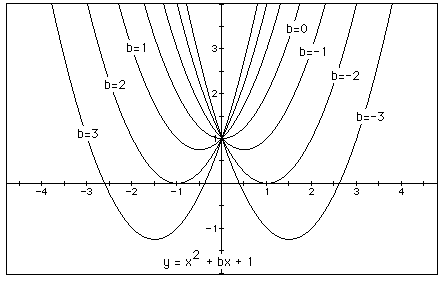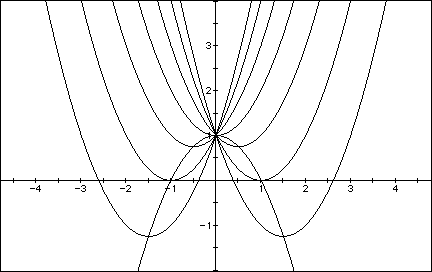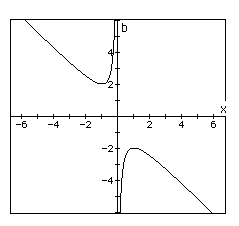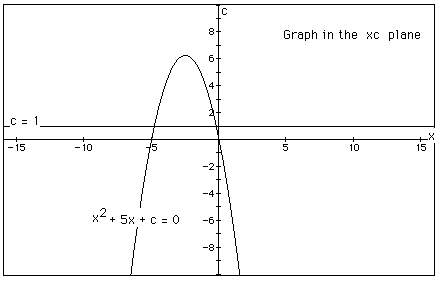

It has now become a rather standard exercise, with
availble technology, to construct graphs to consider the equation
![]()
and to overlay several graphs of
![]()
for different values of a, b, or c as the other two are held constant. The equation is a quadratic equation, which generates a U-shaped graph known as a parabola. From these graphs discussion of the patterns for the roots of
![]()
can be followed.
The Fundamental Theorem of Algebra states that any polynomial function of degree one or greater has at least one root. A corollary states that the number of roots will be equal to the power of the variable of the leading coefficient. A quadratic function will have two roots, but they may not be distinct. The root might be double. If the function crosses over the x-axis, then the roots will be real roots. If the function is tangent to the x-axis, then the roots will be the same. When the function does not intersect the x-axis, the roots are complex imaginary roots. Viewing the graph is a visual way to see the two roots which can also be found by factoring, using the quadratic formula, or completing the square.
For example, if we set
![]()
for b = -3, -2, -1, 0, 1, 2, 3, and overlay the graphs, the following picture is obtained.

We can discuss the "movement" of a parabola as b is changed. The parabola always passes through the same point on the y-axis ( the point (0,1) with this equation).
Now consider the locus of the vertices of the set of parabolas
graphed from
![]() .
.
The locus of the vertices of the parabolas form another parabola that is reflected over the line y = 1. Since it is opening in a downward direction, the coefficient of squared term is less than 0.
Show that the locus is the parabola
![]()
Generalize.

Consider again the equation
![]()
Now graph this relation in the xb plane. We get the
following graph, which is a hyperbola.

If we take any particular value of b, say b = 5, and
overlay this equation on the graph we add a line parallel to the
x-axis. If it intersects the curve in the xb plane the
intersection points correspond to the roots of the original
equation for that value of b. We have the following graph.

For each value of b we select, we get a horizontal
line. It is clear on a single graph that we get two negative real
roots of the original equation when b > 2, one negative real
root when b = 2, no real roots for -2 < b < 2, one real
positive root when b = -2, and two positive real roots when b
< -2.
Consider the case when c = - 1 rather than + 1.

In the following example the equation
![]()
is considered. If the equation is graphed in the xc
plane, it is easy to see that the curve will be a parabola. For
each value of c considered, its graph will be a line crossing the
parabola in 0, 1, or 2 points -- the intersections being at the
roots of the orignal equation at that value of c. In the graph,
the graph of c = 1 is shown. The equation
![]()
will have two negative roots -- approximately -0.2 and
-4.8.

There is one value of c where the equation will have only 1 real root -- at c = 6.25. For c > 6.25 the equation will have no real roots and for c < 6.25 the equation will have two roots, both negative for 0 < c < 6.25, one negative and one 0 when c = 0 and one negative and one positive when c < 0.